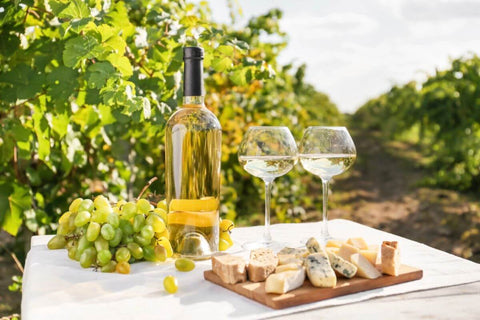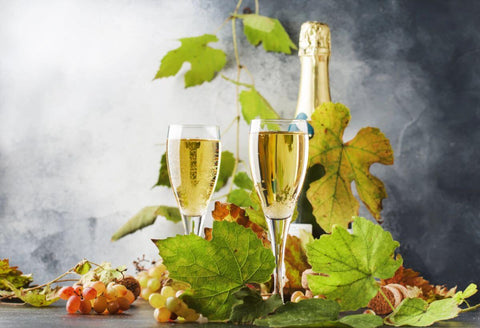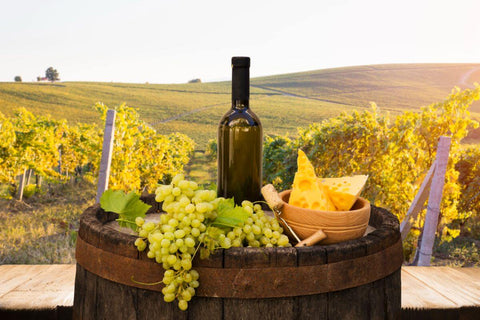Overview
- Chardonnay is a versatile white wine originating from Burgundy, France, celebrated for its wide range of flavors and styles.
From crisp, unoaked bottles to rich, buttery oaked varieties, it suits any occasion.- Understanding its flavor profiles, styles, and tasting techniques helps enthusiasts confidently select and enjoy their ideal bottle.
Exploring wine introduces a world of new flavors and experiences, and Chardonnay is an ideal place to begin. Originating from Burgundy, France, this globally celebrated white wine offers a variety of styles suited for both casual moments and special occasions.
A frequent question among beginners is What does Chardonnay taste like? Understanding its flavor profile helps you pair it with the right dishes and occasions, enhancing every sip. This article breaks down the essentials of this iconic white wine, helping you confidently explore its diverse styles and find one that suits your palate.
What Is Chardonnay?
This green-skinned grape is celebrated for producing some of the world’s most renowned white wines. Its adaptability to different climates and soils allows winemakers to craft styles that range from crisp and mineral-driven to rich and creamy.
Its remarkable versatility has earned it worldwide popularity, making it a top choice for any occasion—from casual get-togethers to elegant dinners. Wine enthusiasts, including those in the Philippines, enjoy its approachable flavors as well as the depth and complexity it offers seasoned drinkers.
Common Flavor Profiles of Chardonnay

This white wine offers a wide range of flavors, making it one of the most versatile white wines. Its taste can vary depending on climate, winemaking techniques, and aging, allowing each bottle to showcase unique characteristics that appeal to different palates.
- Fruit Notes – Cooler climates bring out green apple, lemon, pear, and citrus flavors, while warmer regions highlight tropical notes like pineapple, mango, and melon, as seen in Grant Burge Summers Chardonnay 2019.
- Oak Influence – Oak aging introduces vanilla, butter, caramel, and toasted spice. Malolactic fermentation softens acidity, creating a smooth, creamy texture, as in Yarden Chardonnay 2020.
- Secondary Flavors – Terroir and winemaking can add mineral, herbal, or subtle spice notes. Aging may bring nutty or toasted bread nuances, exemplified by Cape Mentelle Chardonnay 2017.
Styles of Chardonnay and Their Taste Differences
This classic varietal offers distinct styles, each with unique flavors and textures. Recognizing these differences allows wine enthusiasts to select the expression that best suits their palate and the moment.
Unoaked Chardonnay
Crisp and bright, unoaked expressions like Wente Morning Fog 2021 showcase fresh fruit flavors—green apple, lemon, and pear—balanced by naturally high acidity. Without oak influence, this style highlights clarity and vibrancy, perfect for those who prefer a clean, refreshing sip.
It pairs well with light dishes like salads, seafood, or fresh cheeses, allowing the wine’s natural fruitiness to shine without interference from creamy or buttery textures. This style is approachable for new wine enthusiasts while still offering enough structure to satisfy those seeking a lively, elegant white wine.
Oaked Chardonnay
Full-bodied and rich, oaked expressions like Montes Alpha 2022 develop layers of vanilla, toast, butter, and caramel through oak aging. Malolactic fermentation softens the acidity, creating a smooth, creamy texture that enhances depth and complexity.
This style is ideal for wine lovers who enjoy a more indulgent white wine experience, pairing beautifully with roasted chicken, creamy pastas, and dishes with rich sauces. Its rounded texture and layered flavors make each sip an exploration, appealing to both seasoned enthusiasts and those looking to appreciate a more luxurious Chardonnay.
Chablis-style Chardonnay
Originating from France’s Chablis region, this style is typically unoaked or lightly oaked, emphasizing crisp citrus flavors and pronounced minerality. Lean and elegant, bottles like Bouchard Pere & Fils Bourgogne reflect the cool climate through bright acidity and a clean, refined profile.
It is particularly versatile with food, complementing shellfish, sushi, and light poultry dishes. This style appeals to enthusiasts who favor precision and subtlety in a wine, offering a sophisticated alternative for those who want a white wine that emphasizes elegance over richness.
How to Taste Chardonnay
Figuring out what does Chardonnay tastes like begins with thoughtful tasting to uncover the nuances that make each bottle unique. By observing its color, aroma, flavor, and finish, you can fully appreciate its distinctive profile and style.
- Observe the color – Pale yellow signals a crisper wine; deeper gold may indicate oak aging.
- Swirl to release aromas – Note fruit (apple, pear, tropical), oak (vanilla, toast), and secondary notes like butter or minerals.
- Sip to identify taste layers – Evaluate acidity, texture (creamy vs. crisp), fruit intensity, and oak influence.
- Consider the finish – Crisp finishes are refreshing, while oaked styles leave a lingering creamy or nutty aftertaste.
Get Quality Chardonnay at Ralph’s Wine and Spirits

For wine enthusiasts in the Philippines, Ralph’s Wine and Spirits offers a curated selection of oaked and unoaked varieties from top international regions.
From crisp, fruit-forward options to rich, buttery bottles, our collection caters to every palate. Whether starting your wine journey or choosing a special bottle, each selection is handpicked for quality, versatility, and an exceptional tasting experience.
Key Takeaway
Understanding the fundamentals of this classic white wine helps you find a style that matches your palate and enjoy each sip with confidence—whether for casual moments or special occasions.
Explore Ralph’s Wine and Spirits’ curated selection, featuring flavors from bright citrus to creamy vanilla, and discover the perfect bottle for any occasion. Contact us today to learn more.



